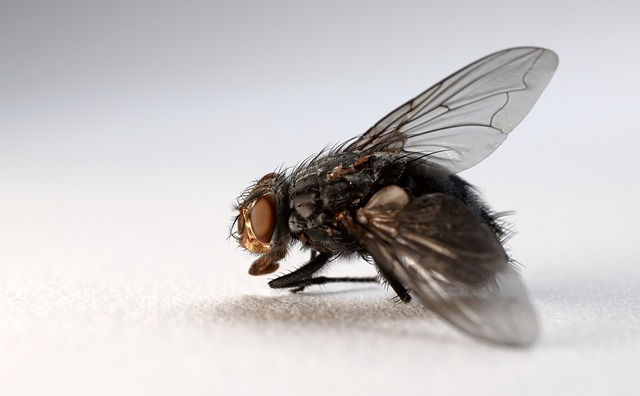Exterior and perimeter inspections by professional pest inspection services are crucial for proactive pest control. These services detect subtle signs of pests like termites, rodents, bed bugs, and ants using expertise and technology. Early detection allows for timely intervention, mitigating costs and health risks. Specialized inspections target common pests, with termite and rodent infestations requiring particular attention due to potential damage. Professionals offer tailored solutions, educate property owners, and ensure comprehensive pest protection in both residential and commercial settings.
Exterior and perimeter inspections are essential components of proactive pest control. In today’s digital era, understanding the intricacies of pest infestations is more crucial than ever for both residential and commercial properties. This article explores the significance of regular pest infestation inspections, delving into key components that make up a comprehensive service, common pests to watch out for, and the vital role played by professional pest inspectors in preventing and mitigating potential issues. From termite and rodent inspections to bed bug and ant control, staying proactive ensures a peaceful, pest-free environment.
Understanding the Importance of Exterior and Perimeter Inspections
Exterior and perimeter inspections are crucial components of proactive pest control. These thorough assessments go beyond merely identifying visible pests; they aim to uncover potential entry points, signs of infestation, and environmental conditions that encourage pest activity. By conducting regular inspections, homeowners and business owners alike can significantly reduce the risk of pest infestations such as termites, rodents, bed bugs, and ants.
Professional pest inspection services combine expertise and technology to detect even the subtlest indications of pest presence. From identifying structural vulnerabilities to locating moisture issues that attract pests, these inspections are a proactive measure against costly damage and health risks associated with pest infestations. Early detection through exterior and perimeter inspections allows for timely intervention, making it easier and more effective to manage and control pest populations before they escalate.
Key Components of a Comprehensive Pest Infestation Inspection Service
A comprehensive pest infestation inspection service goes beyond a surface-level assessment. Professionals meticulously examine every nook and cranny of a property, be it a home or a commercial space, to identify potential entry points, signs of existing infestations, and risk factors. This detailed process involves several key components that ensure a thorough evaluation.
The initial step includes a visual inspection by experienced technicians who look for common pests like termites, rodents, bed bugs, and ants. They check for visible damage, unusual behaviors, or telltale signs such as droppings and gnaw marks. Termite inspections are crucial to identifying potential wood damage caused by these destructive insects. Advanced tools, including moisture meters and thermal imaging cameras, may also be employed to detect hidden issues. This comprehensive approach ensures that all pest detection services are covered, enabling professionals to deliver tailored solutions for proactive pest control.
Common Pests to Look Out For During an Inspection
During an exterior and perimeter inspection for proactive pest control, it’s crucial to be on the lookout for a variety of common pests that can infiltrate homes and commercial properties. Pest infestation inspection services often target termites, rodents, bed bugs, and ants, among others. Termites, known for their silent destruction, require specialized termite inspection services due to their ability to chew through wood without detection. Rodent infestations, while unsanitary, can be hard to spot until they’ve caused significant damage, making rodent infestation inspection a critical component of any comprehensive pest detection services. Bed bugs, tiny yet relentless, have made a resurgence in recent years and require meticulous home pest inspection and treatment. Similarly, ants, though seemingly insignificant, can signal larger problems if left unchecked, prompting the need for ant infestation inspection during a professional pest control inspection.
The Role of Professional Pest Inspectors in Preventive Measures
Professional pest inspectors play a pivotal role in preventive measures for both residential and commercial spaces. They offer specialized services like termite inspection, rodent infestation inspection, bed bug inspection, and ant infestation inspection, among others, to identify potential entry points and signs of existing pests. These experts employ advanced techniques and tools, such as thermal imaging cameras and moisture meters, to detect even the subtlest indications of pest activity that may be overlooked by untrained eyes.
Their comprehensive pest detection services involve meticulous exterior and perimeter inspections, ensuring every nook and cranny is examined thoroughly. By doing so, they can pinpoint areas prone to infestation and recommend tailored solutions. Moreover, professional pest inspectors educate property owners or managers on best practices for maintaining a pest-free environment, including proper waste disposal, sealing entry points, and regular cleaning routines. This proactive approach not only helps avoid costly damage but also promotes a healthier living or working space.
Regular exterior and perimeter inspections are a proactive approach to pest control, vital for both residential and commercial properties. By engaging professional pest inspection services, you can detect potential infestations early on, preventing costly damage and ensuring a healthy environment. These thorough assessments cover a range of pests, from termites and rodents to bed bugs and ants, allowing property owners and managers to take immediate action. With their expertise, professionals play a key role in implementing preventive measures, making them an indispensable asset for maintaining pest-free spaces.
